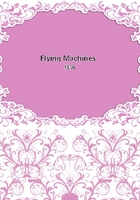
第55章
Bleriot--No. XI, the latest of the Bleriot productions, and the greatest record maker of the lot, is 28 feet in spread of main plane, and depth of 6 feet in largest part. This would give a main surface of 168 square feet, but as the ends of the plane are sharply tapered from the rear, the actual surface is reduced to 150 square feet. Projecting from the main frame is an elongated tail (shown in the illustration) which carries the horizontal and vertical rudders. The former is made in three sections. The center piece is 6 feet 1 inch in spread, and 2 feet 10 inches in depth, containing 17 square feet of surface. The end sections, which are made movable for warping purposes, are each 2 feet 10 inches square, the combined surface area in the entire horizontal rudder being 33 square feet. The vertical rudder contains 4 1/2 square feet of surface, making the entire supporting area 187 1/2 square feet.
From the outer end of the propeller shaft in front to the extreme rear edge of the vertical rudder, the machine is 25 feet deep. Deducting the 6-foot depth of the main plane leaves 19feet as the length of the rudder beam and rudders. The motor equipment consists of a 3-cylinder, air-cooled engine of about 30 h. p. placed at the front end of the body frame, and carrying on its crankshaft a two-bladed propeller 6 feet 8 inches in diameter. The engine speed is about 1,250 r. p. m. at which the propeller develops a thrust of over 200 pounds.
The Bleriot XI complete weighs 484 pounds, and with operator and fuel supply ready for a 25- or 30-mile flight, 715pounds. One peculiarity of the Bleriot construction is that, while the ribs of the main plane are curved, there is no preliminary bending of the pieces as in other forms of construction.
Bleriot has his rib pieces cut a little longer than required and, by springing them into place, secures the necessary curvature. A good view of the Bleriot plane framework is given on page 63.
Combined Triplane and Biplane.
At Norwich, Conn., the Stebbins-Geynet Co., after several years of experiment, has begun the manufacture of a combination triplane and biplane machine. The center plane, which is located about midway between the upper and lower surfaces, is made removable. The change from triplane to biplane, or vice versa, may be readily made in a few minutes. The constructors claim for this type of air craft a large supporting surface area with the minimum of dimensions in planes. Although this machine has only 24-foot spread and is only 26feet over all, its total amount of supporting area is 400 square feet; weight, 600 pounds in flying order, and lifting capacity approximately 700 pounds more.
The frame is made entirely of a selected grade of Oregon spruce, finished down to a smooth surface and varnished. All struts are fish-shaped and set in aluminum sockets, which are bolted to top and lower beams with special strong bolts of small diameter. The middle plane is set inside the six uprights and held in place by aluminum castings. A flexible twisted seven-strand wire cable and Stebbins-Geynet turnbuckles are used for trussing.
The top plane is in three sections, laced together. It has a 24-foot spread and is 7 feet in depth. The middle plane is in two sections each of 7 1/2 feet spread and 6 feet in depth. The center ends of the middle plane sections do not come within 5 feet of joining, this open space being left for the engine.
The bottom plane is of 16 feet spread and 5 feet in depth. It will thus be seen that the planes overhang one another in depth, the bottom one being the smallest in this respect. The planes are set at an angle of 9 degrees, and there is a clear space of 31/2 feet between each, making the total distance from the bottom to the top plane a trifle over 7 feet. The total supporting surface in the main planes is 350 square feet. By arranging the three plane surfaces at an angle as described and varying their size, the greatest amount of lifting area is secured above the center of gravity, and the greatest weight carried below.
The ribs are made of laminated spruce, finished down to 1/2x3/4-inch cross section dimensions, with a curvature of about 1 in 20, and fastened to the beams with special aluminum castings.
Number 2 Naiad aeroplane cloth is used in covering the planes, with pockets sewn in for the ribs.
Two combination elevating rudders are set up well in front, each having 18 square feet of supporting area. These rudders are arranged to work in unison, independently, or in opposite directions. In the Model B machine, there are also two small rear elevating rudders, which work in unison with the front rudders. One vertical rudder of 10 square feet is suspended in the rear of a small stationary horizontal plane in Model A, while the vertical rudder on Model B is only 6 square feet in size. The elevating rudders are arranged so as to act as stabilizing planes when the machine is in flight. The wing tips are held in place with a special two-piece casting which forms a hinge, and makes a quick detachable joint. Wing tips are also used in balancing.
Model A is equipped with a Cameron 25-30 h. p., 4-cylinder, air-cooled motor. On Model B a Holmes rotary 7-cylinder motor of 4x4-inch bore and stroke is used.
Positive control is secured by use of the Stebbins-Geynet "auto-control" system. A pull or push movement operates the elevating rudders, while the balancing is done by means of side movements or slight turns. The rear vertical rudder is manipulated by means of a foot lever.
New Cody Biplane.